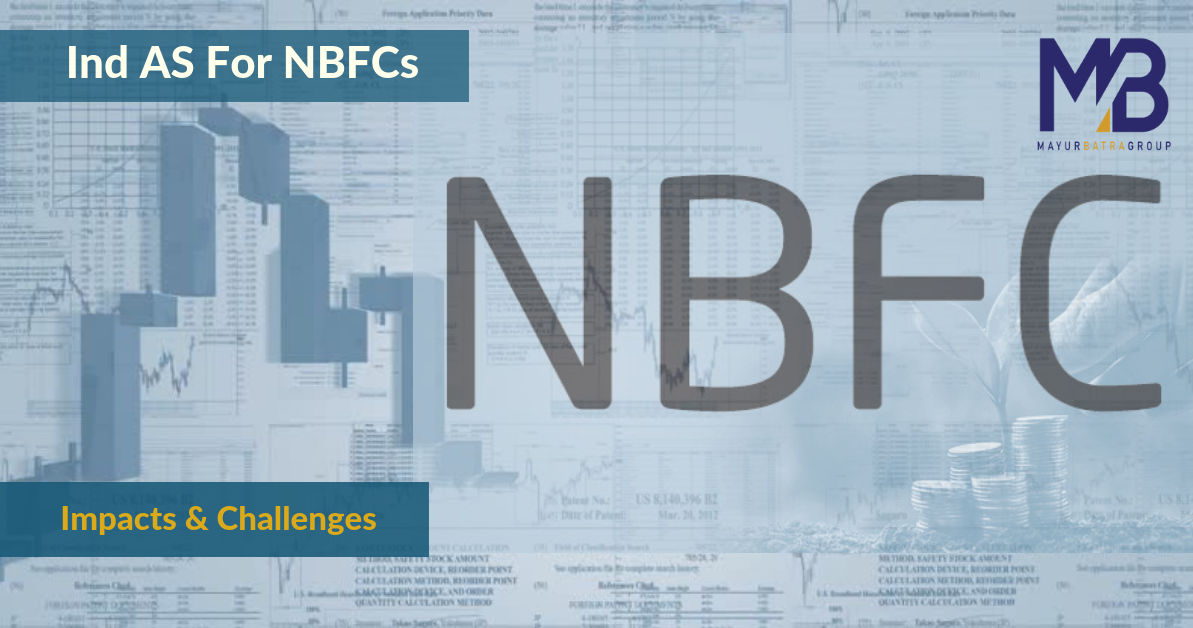Ind AS For NBFCs- Impacts & Challenges

The Ministry of Corporate Affairs (MCA) vide notification dated March 30, 2016, has notified that NBFCs having a net worth of Rs. 500 crores or more shall be required to prepare financial statements complying with Ind AS for accounting periods beginning from April 1, 2018, with comparatives and NBFCs having a net worth of Rs. 250 crores or more shall be required to prepare Ind AS compliant financial statements for accounting periods beginning from April 1, 2019, with comparatives.
One of the particular challenges for NBFC’s has been the lack of preparation and external communication of the impact of Ind AS on their financial statements and results, most stakeholders have been concerned about a number of aspects relating to the transition to these new standards, for instance, the accounting of classification and recognition of Non-Performing Loans (NPL), securitization transactions, investment classification, and valuation etc. are primarily driven by RBI regulations.
Need for Separate formats for the preparation of Financials of NBFCs

 Key Elements of the Transition Plan
Stakeholder Communication- Transition from Accounting Standards to Indian Accounting Standard is expected to vitally change the key performance indicators or business ratios. The timely communication of the first time adoption choices and the changes it is going to bring would be critical as they may vary from NBFCs to NBFCs which will result in far-reaching consequences, examples are-
Key Elements of the Transition Plan
Stakeholder Communication- Transition from Accounting Standards to Indian Accounting Standard is expected to vitally change the key performance indicators or business ratios. The timely communication of the first time adoption choices and the changes it is going to bring would be critical as they may vary from NBFCs to NBFCs which will result in far-reaching consequences, examples are-
- As NBFC’s are generally engaged in financing, leasing and other such activities, their operation cycle is different than that of other companies.
- As per Ind AS-1, Presentation of Financial Statements, of some entities such as financial institutions, the presentation of assets and liabilities in terms of liquidity either in increasing order or in decreasing order provides information that is more reliable and relevant than presentation in terms of current or non-current classification.

 Key Elements of the Transition Plan
Stakeholder Communication- Transition from Accounting Standards to Indian Accounting Standard is expected to vitally change the key performance indicators or business ratios. The timely communication of the first time adoption choices and the changes it is going to bring would be critical as they may vary from NBFCs to NBFCs which will result in far-reaching consequences, examples are-
Key Elements of the Transition Plan
Stakeholder Communication- Transition from Accounting Standards to Indian Accounting Standard is expected to vitally change the key performance indicators or business ratios. The timely communication of the first time adoption choices and the changes it is going to bring would be critical as they may vary from NBFCs to NBFCs which will result in far-reaching consequences, examples are-
- Transactions related to Securitization-Securitisation and direct assignment transactions are an important source for generating liquidity, managing credit concentration, amongst others for an NBFC. Under the Accounting Standards, the de-recognition of assets was largely driven by the ‘true sale’ criteria. The guidance on de-recognition of assets under Ind AS is significantly different and focuses on whether significantly all the risks and rewards related to the asset have been transferred.
- Inter-Company funding arrangements- Certain instruments like Compulsory Convertible Preference Shares (‘CCCPS’) are used as funding tools, the advantage of using these type of instruments to the issuer is that the issuer is permitted to consider certain CCCPS as a part of Tier 1 capital under the RBI Regulations and capital under Indian GAAP. In instances where the conversion ratio is not fixed at inception, such instruments would not be eligible to be considered as equity instruments in the financial statements prepared under Ind AS, as the classification of an instrument as equity or liability is dependent on certain features such as the terms of conversion. NBFCs would need to carefully consider whether these instruments would be eligible to be treated as part of Tier 1 capital for regulatory reporting.


